
Indoor Lighting Guide
Here we shed light on some tips and tricks that will help with selection, final installation and everything in between.
Living Room Planning and Selecting Tips
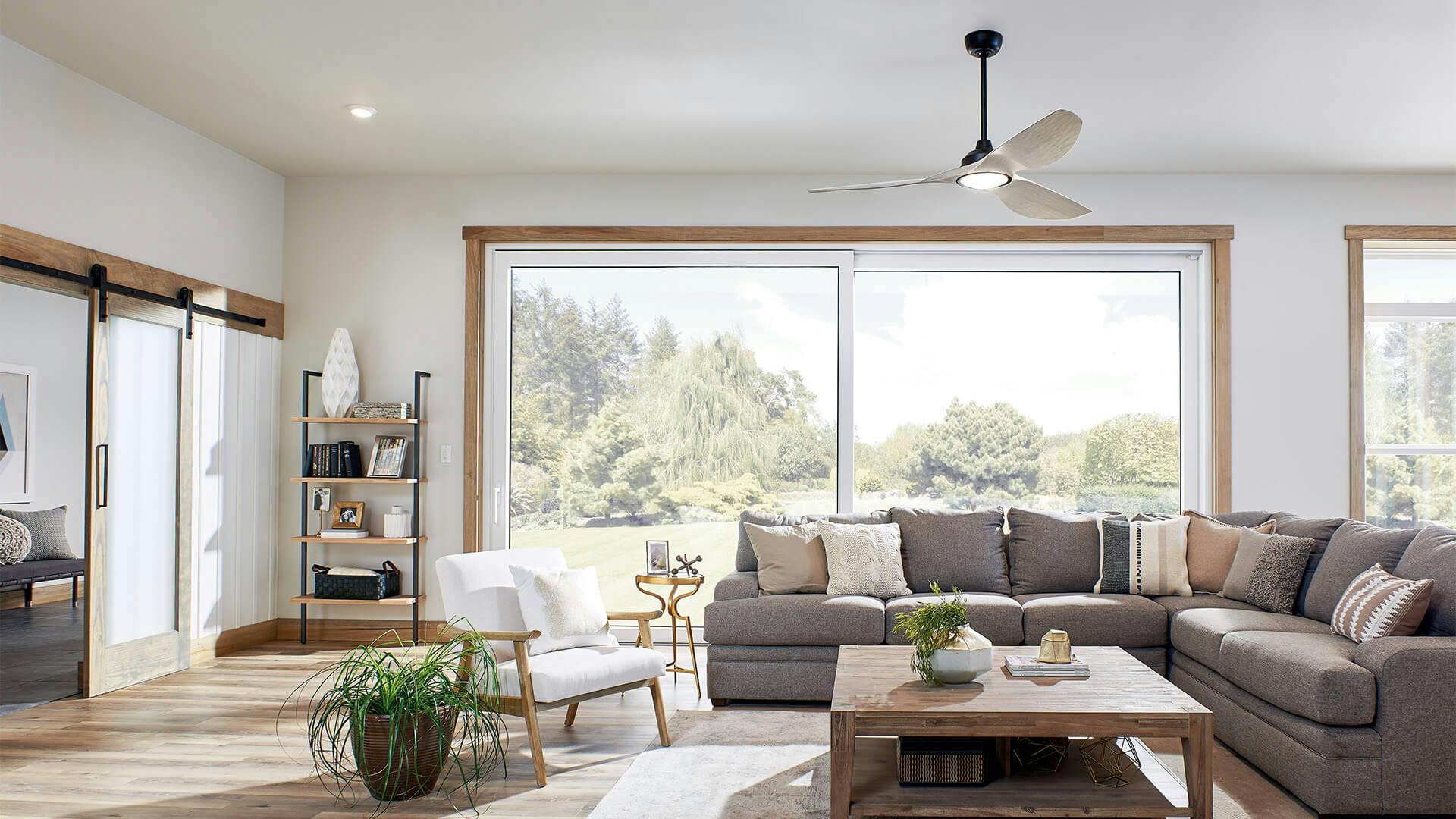
See your Living Room in a Whole New Light
Your living room is a place where you spend time, make memories, relax and unwind. To put your moments in the best light, make sure it sparkles. Here's how to choose the ideal living room light fixtures for your space.
How to Make a Statement
When purchasing a statement living room chandelier, there are a few things to consider. The first is size. We follow a simple formula. Just add up the dimensions (in feet) of a room to arrive at the minimum diameter (in inches) for your chandelier. Then work out what shape fits your style. Round or square offer classic looks which can vary in material and size. If you’re looking for a more differentiated style, try an oval or a more modern shape to keep things interesting.
Check out more chandelier planning and selecting tips.
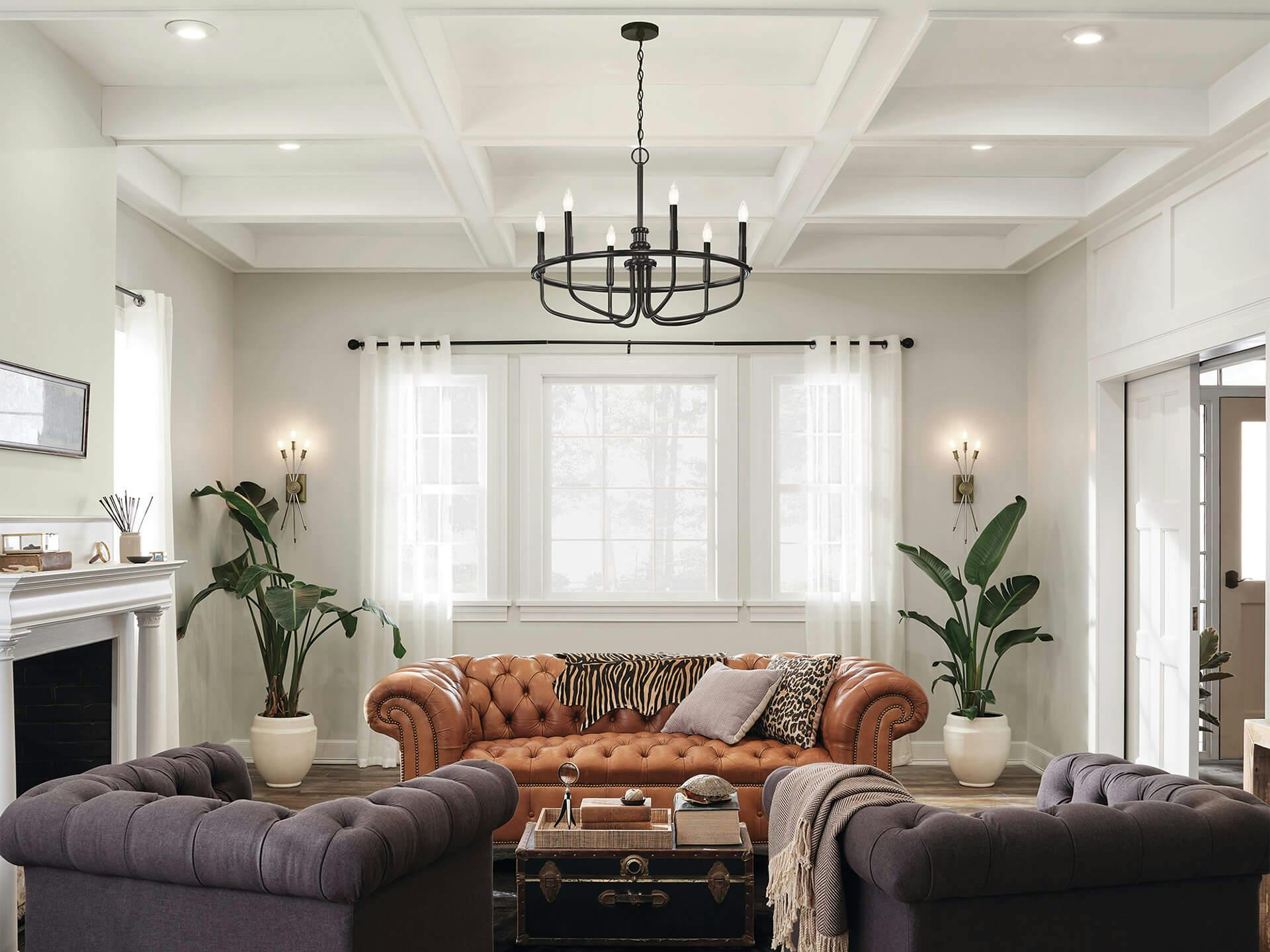
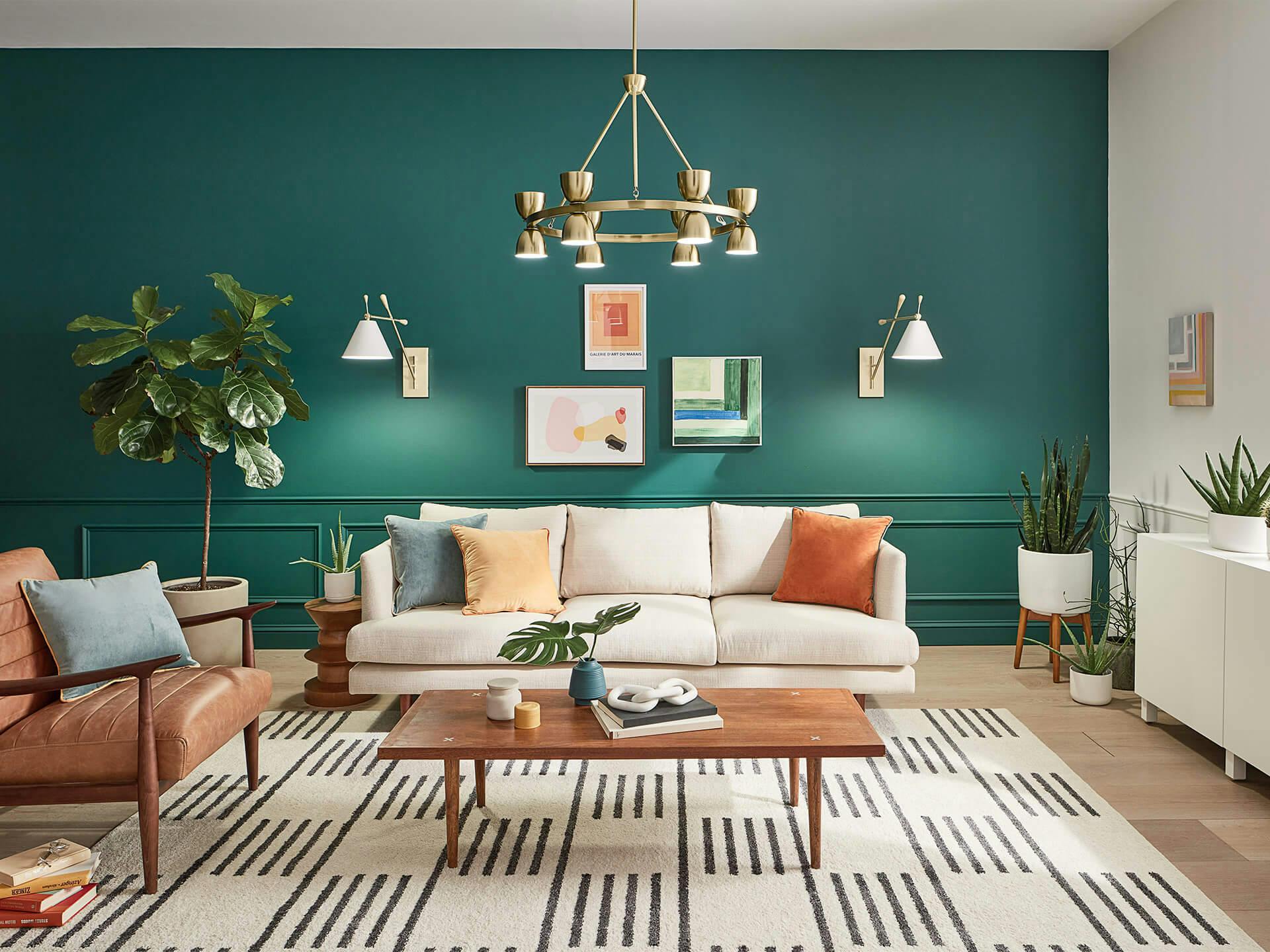
Use Downlights to Brighten Up
Where you place living room ceiling lights can make a big difference in how well lit your space feels. First, you’ll need to think about spacing. A good rule is to divide your ceiling height by 2 to give you the space between each light, but don’t go more than 6 feet apart, or you’ll lose the impact. Then figure out what effect you want the light to have. Is it just for ambient light? Or do you want to accent a wall or direct the eye? Once you have these two choices made, picking your downlights and recessed lighting is a snap.
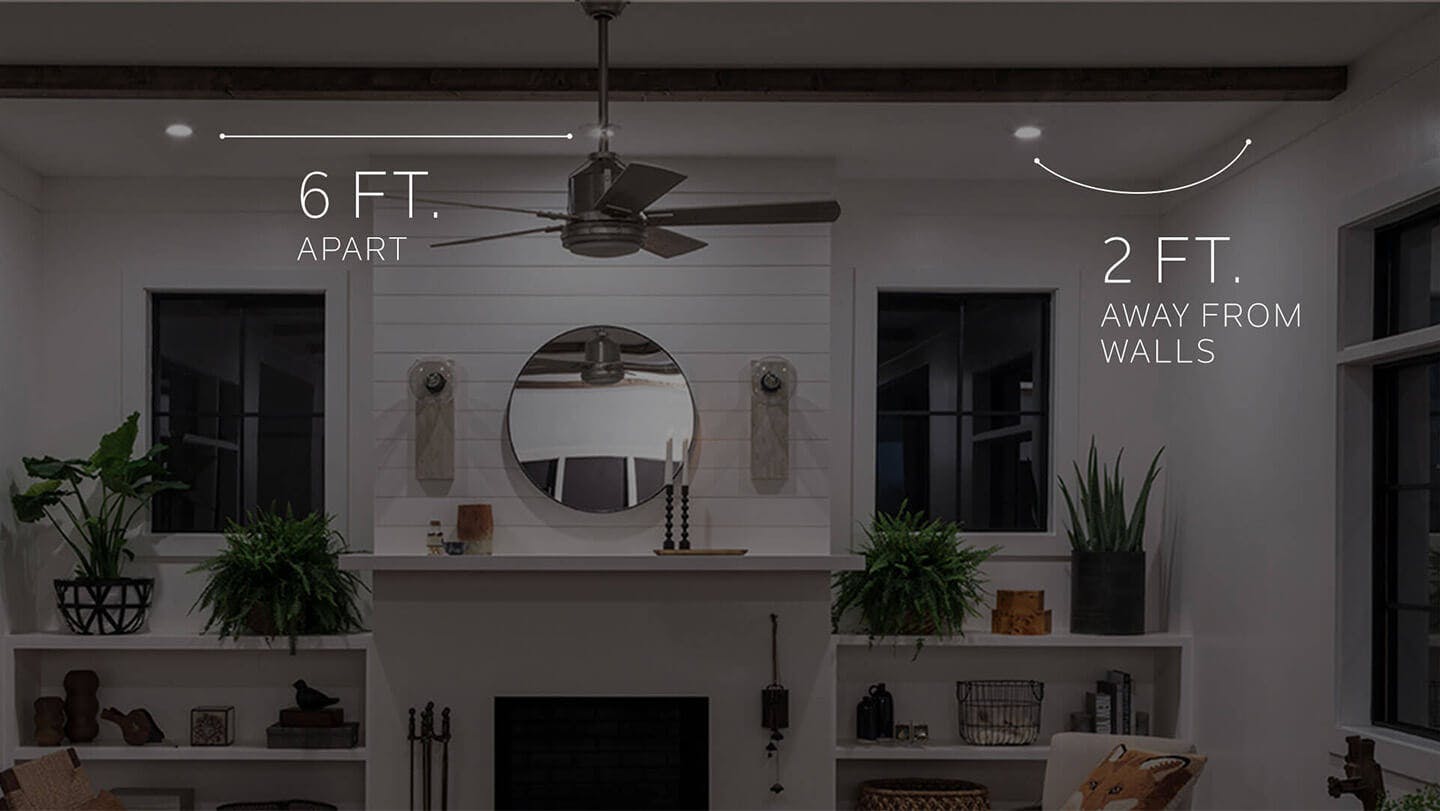
Choosing a Ceiling Fan is a Breeze
Fans work well in almost any living room. They’re great for energy efficiency, and in warm months and older homes with poor circulation. When you’re choosing a fan, a few things to consider are the location, style and size. Based on the height and angle of your ceiling, you may need an extra downrod to maximize airflow, but don’t be deterred, fans are great for living rooms with tall, vaulted ceilings. Style-wise, the possibilities are as varied as any home décor, like rustic, modern or classic just to name a few. When you’re considering the size of your fan, it’s important to know that the blade size you choose should be based on your total room size. For example if you have a room that is 90-100 square feet, a ceiling fan with a blade sweet of 44 to 48 inches will work best.
For more details on sizing and styles, see more things to consider when buying a ceiling fan.
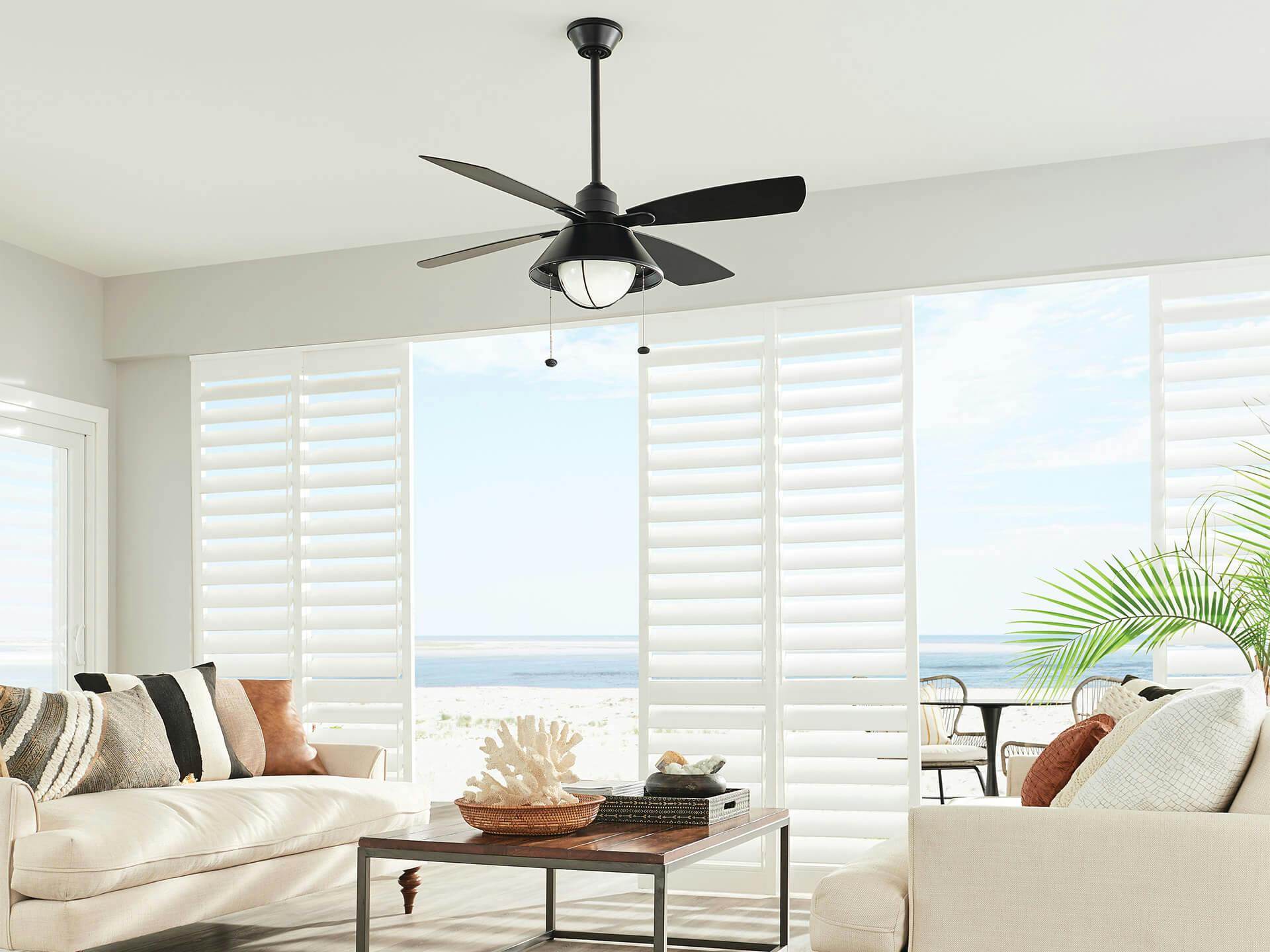
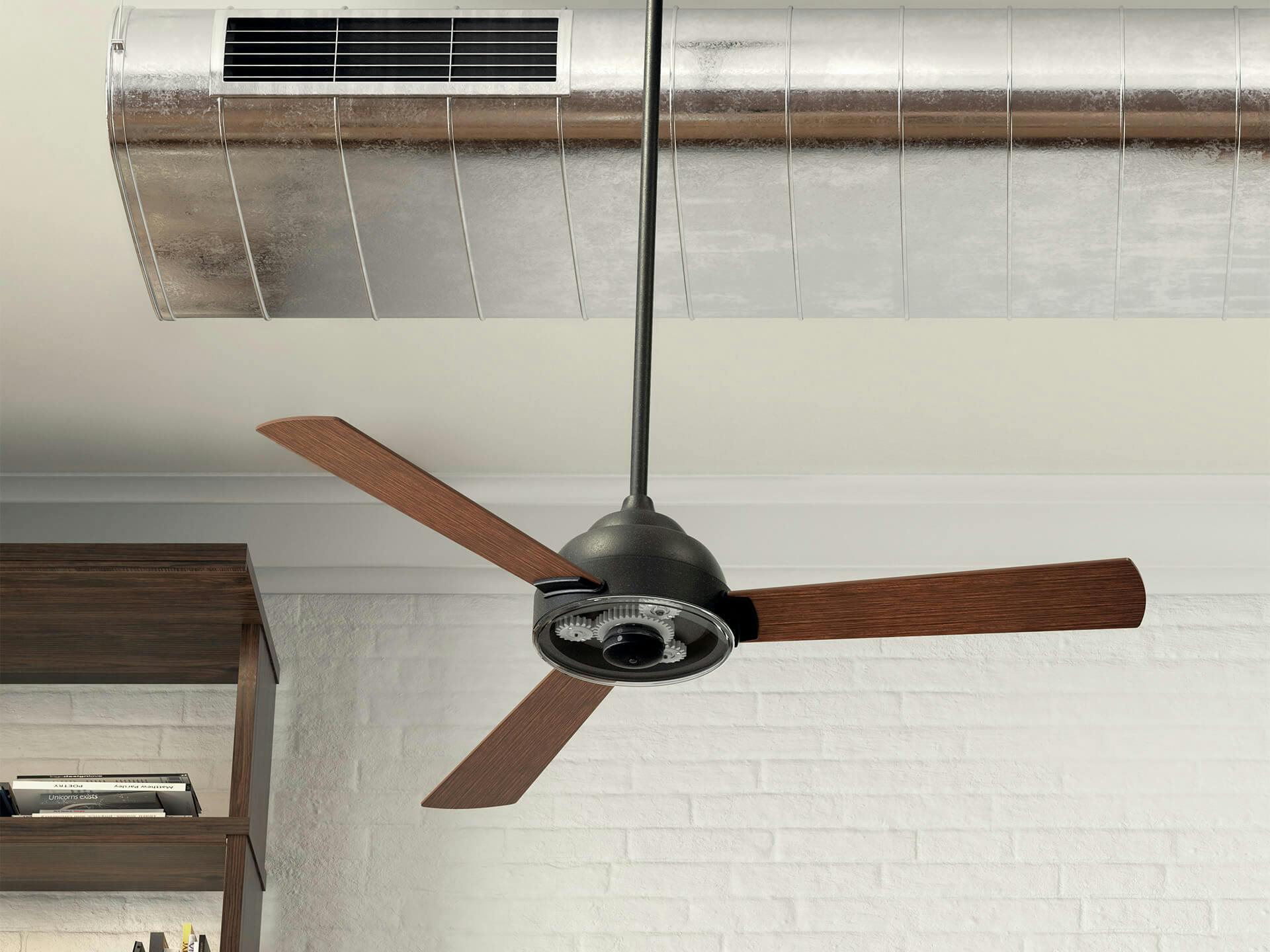
Use Light like Art with Functional, Beautiful Sconces
Sconces are so versatile and can be a lighting complement to any living room. Framing a photograph, reflecting the beauty of a mirror or standing sentinel alongside a hearth, sconces for living rooms light the way down hallways, brighten up bookshelves and add accents to art. When choosing a sconce, the choice is really about your style. And we have nearly every style to choose from. There are a few rules when hanging sconces, however. Install your sconce between 60”- 72” from the floor to the center of the junction box. For vaulted ceilings go for a little higher 66” – 72” but be sure to consider the window frame height. You don’t want them accidentally in line with each other. If you have more than one sconce in the same room, have at least 6’ of space in-between. But if your space is large go with 8′ – 10′. No matter how you place them, they’ll end up lighting your space with a dash of style.
Learn more in our sconce installation guide.
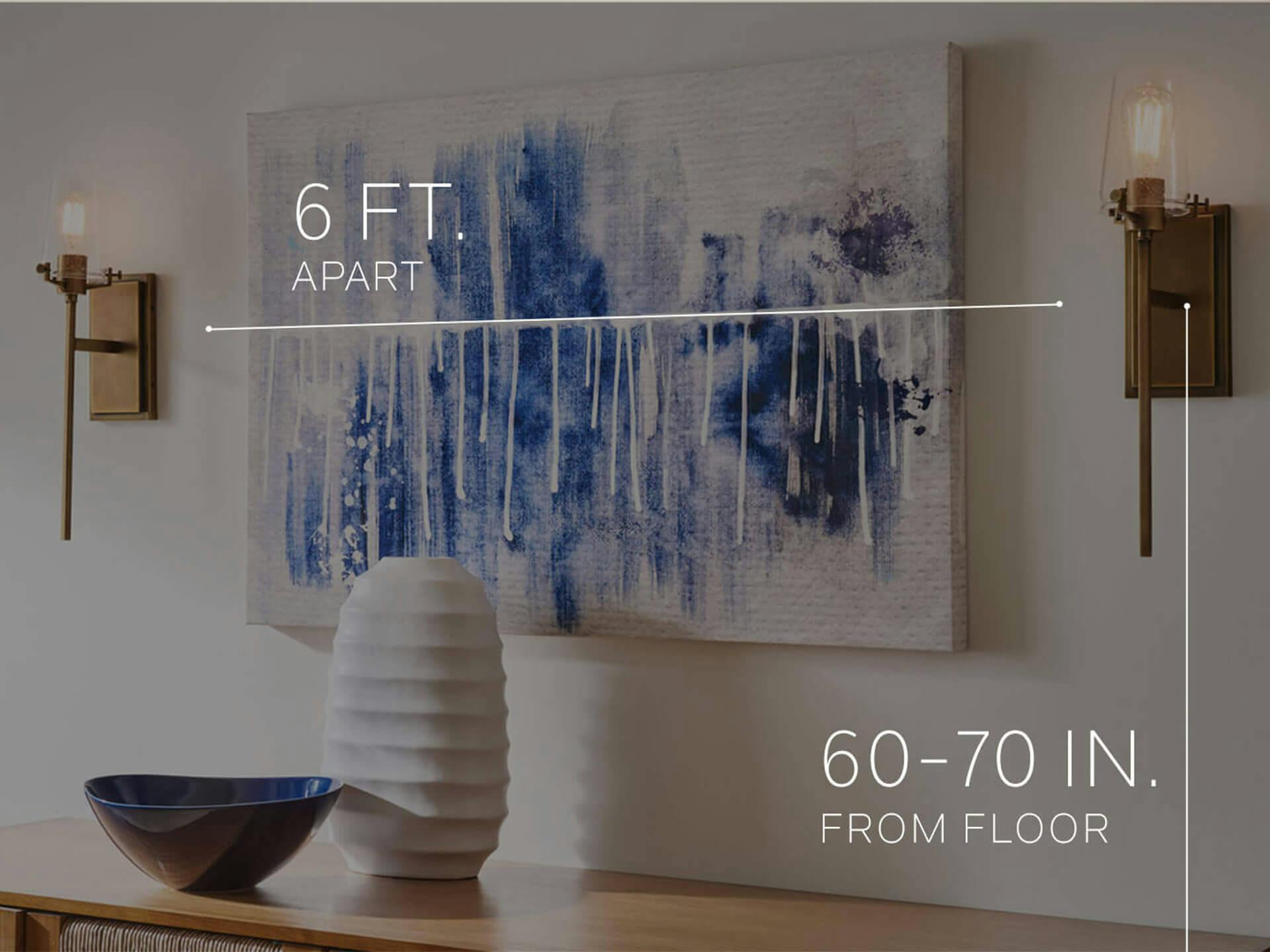
Shine a Light on Your Cabinets and Shelves
For living rooms with built in cabinets or wall shelves, a great way to add a bit of glamor is to add cabinet lighting. This can help highlight a well-styled shelf, add drama to a statement wall and add perfect ambient lighting on occasions when overhead feels too bright. There are many types of cabinet lighting, including under cabinet, over cabinet, inside cabinet, toe kick and more. Consider what look you want to find the right lights for your space.
Learn more about planning for cabinet lighting.
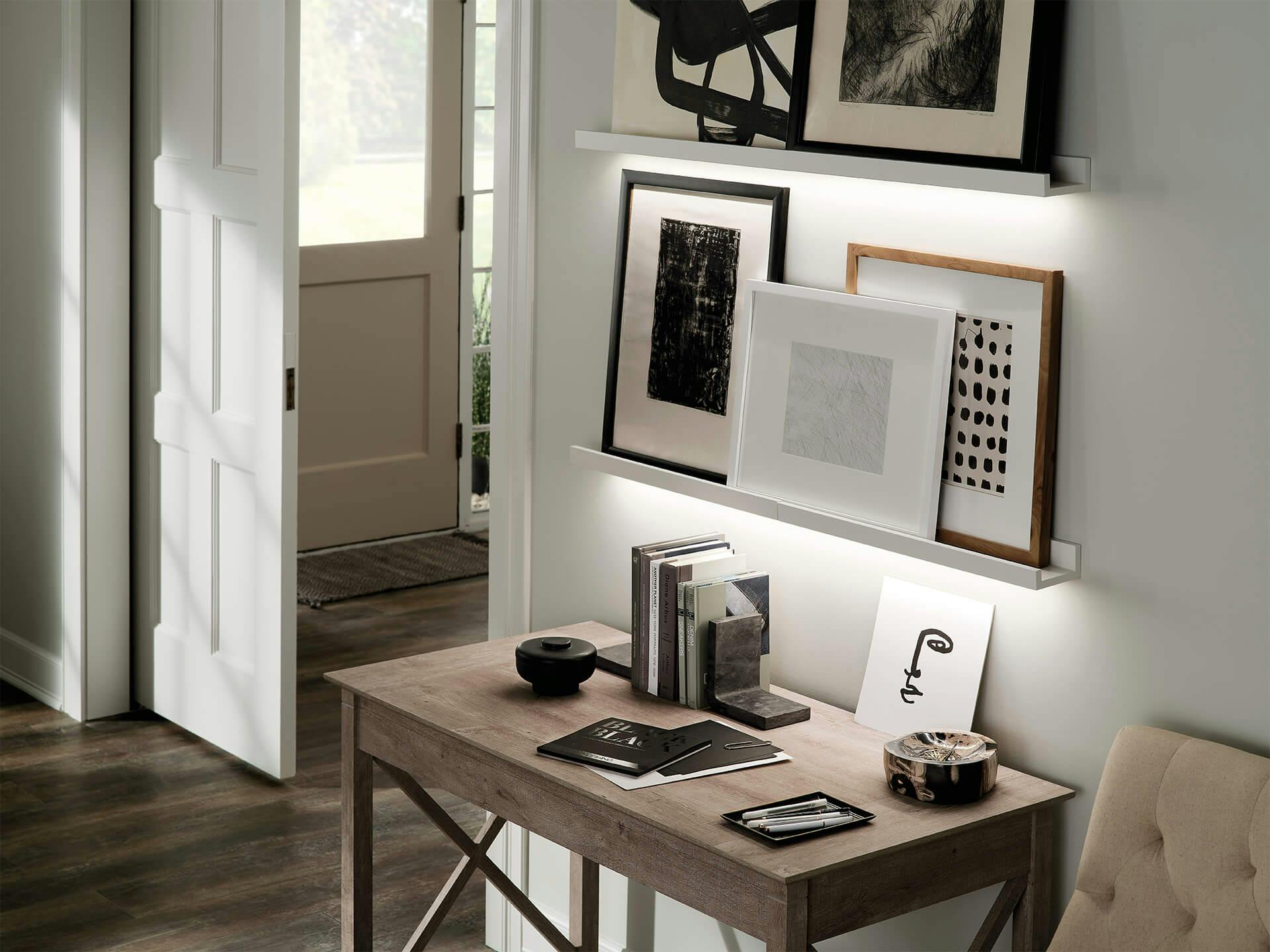

Don’t Forget Any Special Spaces
If your living room has a reading nook, make sure you use light to make the most of it. A well-placed sconce can turn a cluttered corner into a focused seating area perfect for an afternoon book and a cup of tea. You can also use sconces or focused downlights to frame up artwork in your living room if you have a dedicated space for a special piece. If you have a more open concept, make sure your downlights are evenly spaced throughout so there are no dark spots in the evenings.
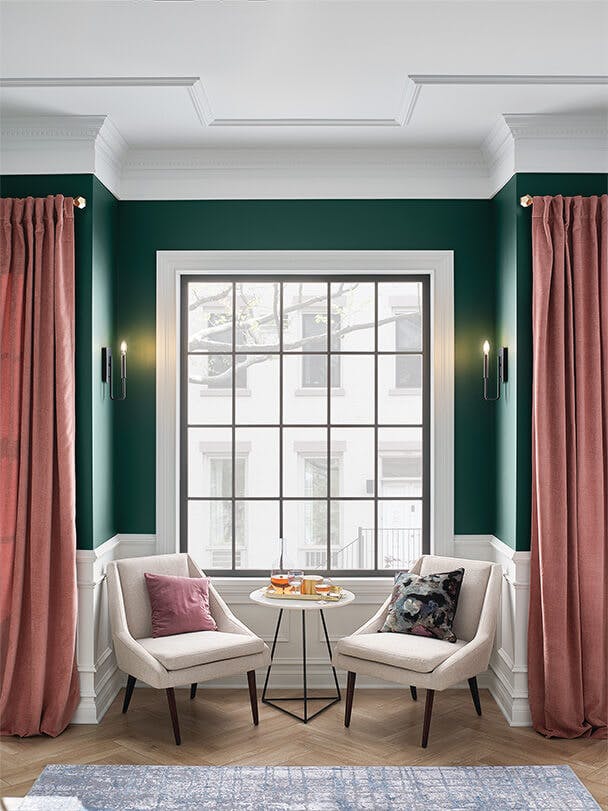
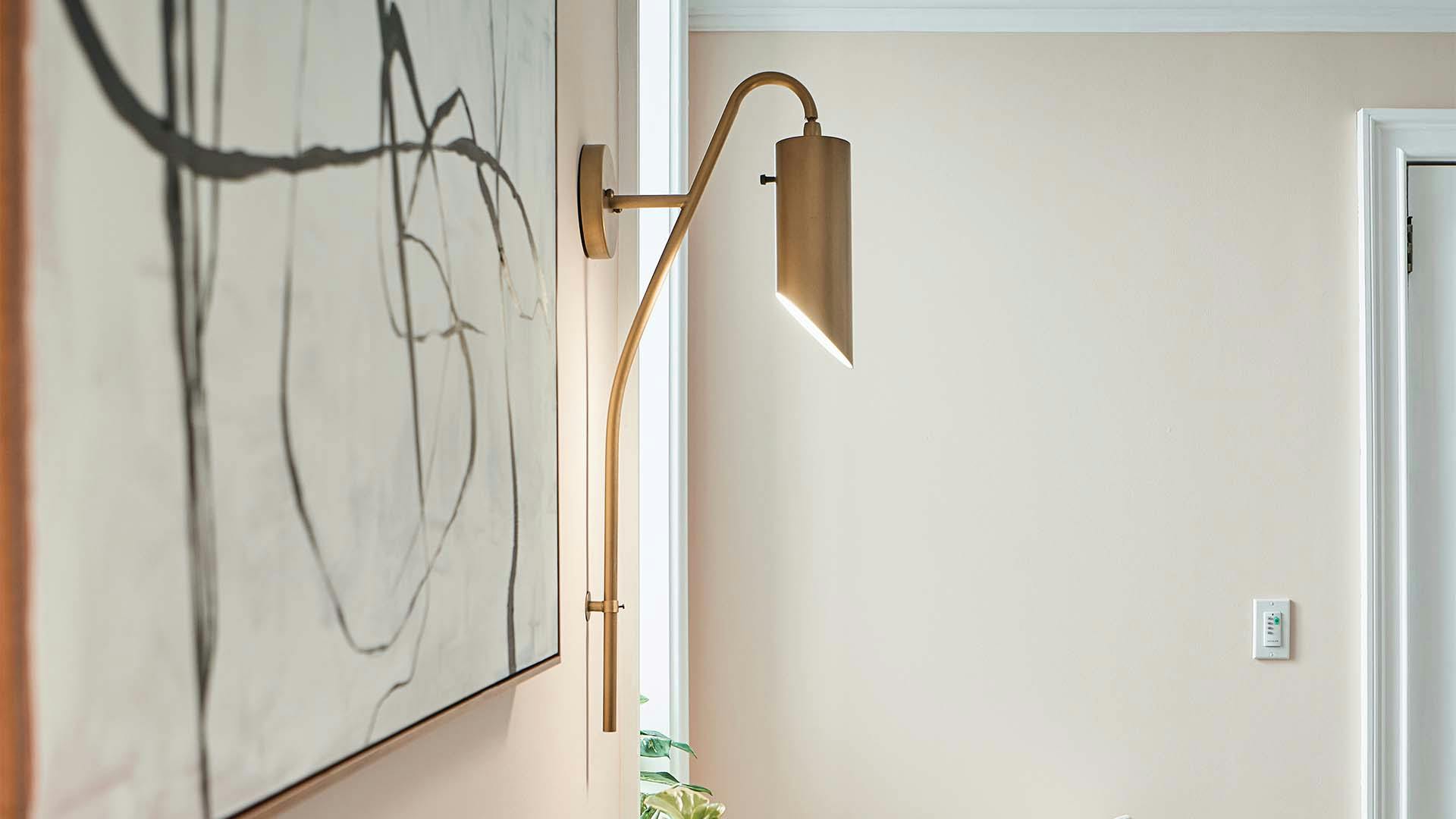
The possibilities for planning and selecting the right living room light are limited only by your imagination. And changing one or two light fixtures can transform the entire look of your space.